Australian Labradoodle vs Labradoodle (Differences)
Labradoodles have exploded in popularity in the past decade. This non-shedding, curly-coated, and family-oriented teddy bear is not only popular in a few countries but globally. This means there are a few variations of the breed.
Some countries favor differently sized as their Poodle mixes so come in three different sizes: miniature, medium, and standard. The most common size will change depending on location. In more build-up areas like the city where apartment living is more common, you might come across the smaller mixes of Labradoodle but in more rural settings the larger version of Doodle with have more space to roam.
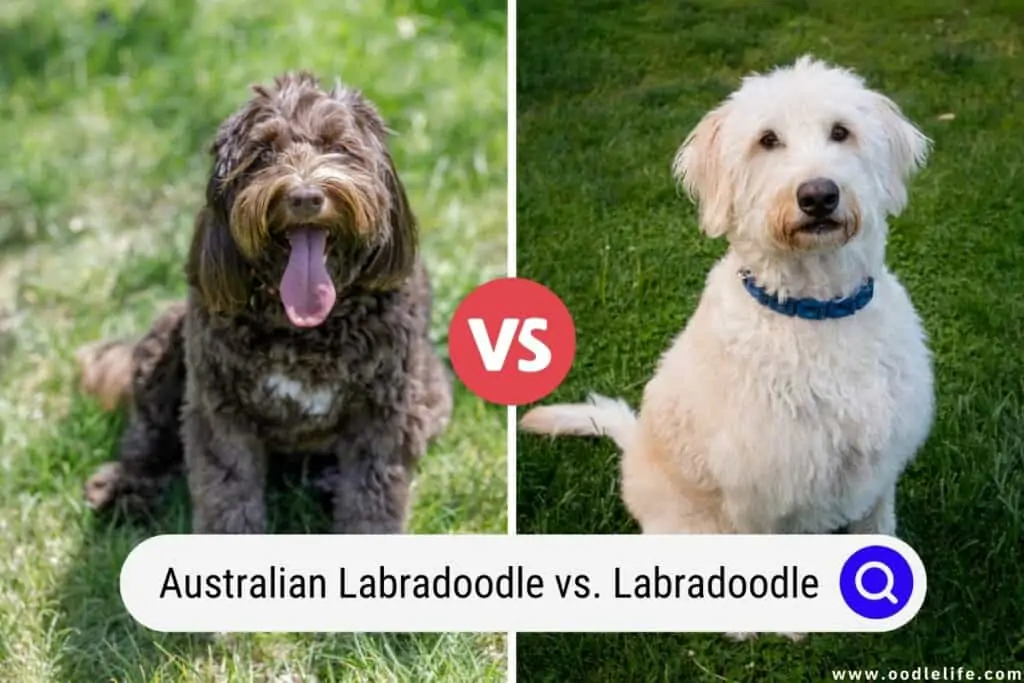
It’s quite easy to mistake an Australian Labradoodle for a regular Labradoodle but there are some fundamental differences between the two breeds. Before you go out and get yourself your very own Labradoodle, make sure you know the key differences and that they will fit your lifestyle.
Breeds: What Makes Up An Australian Labradoodle and Labradoodle?
A Labradoodle is commonly a mix between a Poodle and a Labrador, there can be quite a wide range in how they look for early lines as a mating between a purebred Poodle and a purebred Labrador can give a variety of different sizes and coat textures, even in the same litter. Some pups from the first-generation breeding of Labradoodles can be short-coated like a Labrador and not curly-coated at all. When you begin to see breedings of Labradoodles together, then their offspring will become more consistent with what you expect a Labradoodle to look like.
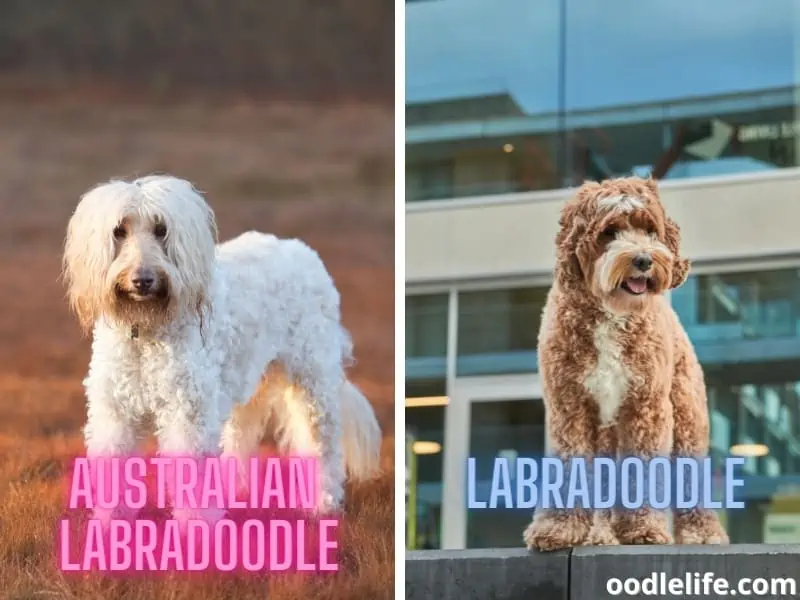
An Australian Labradoodle is a mixture of more than just those two, several other breeds can be traced back to this crossbreed. While containing both Poodle and Labrador, an Australian Labradoodle will also contain some English and American Cocker Spaniel, Curly Coated Retriever, and Irish Water Spaniel. The larger mix of breeds in the Australian Labradoodle was to produce an energetic, trainable, and family-oriented dog without the stubborn streak the early breedings had when it was just a mix between the Poodle and Labrador.
With many different purebred lines in the Australian Labradoodle, you still have a dog that looks very recognizable as a Labradoodle but with a few benefits of a few other breeds.
All Australian Labradoodles are a minimum of the fifth generation just to allow for these other breeds to be worked in and for the genetic foundation of the Australian Labradoodle. Some breeders still will occasionally breed another purebred into the lines to diversify the genetic pool.
Size: How Big Are Labradoodles?
Labradoodles, both Australian and standard come in three sizes: miniature, medium, and standard depending on the size of the Poodle that’s bred with a Labrador. There is no difference between the range in sizes. Both a Miniature Australian Labradoodle and Labradoodle can range between 14 and 16 inches.
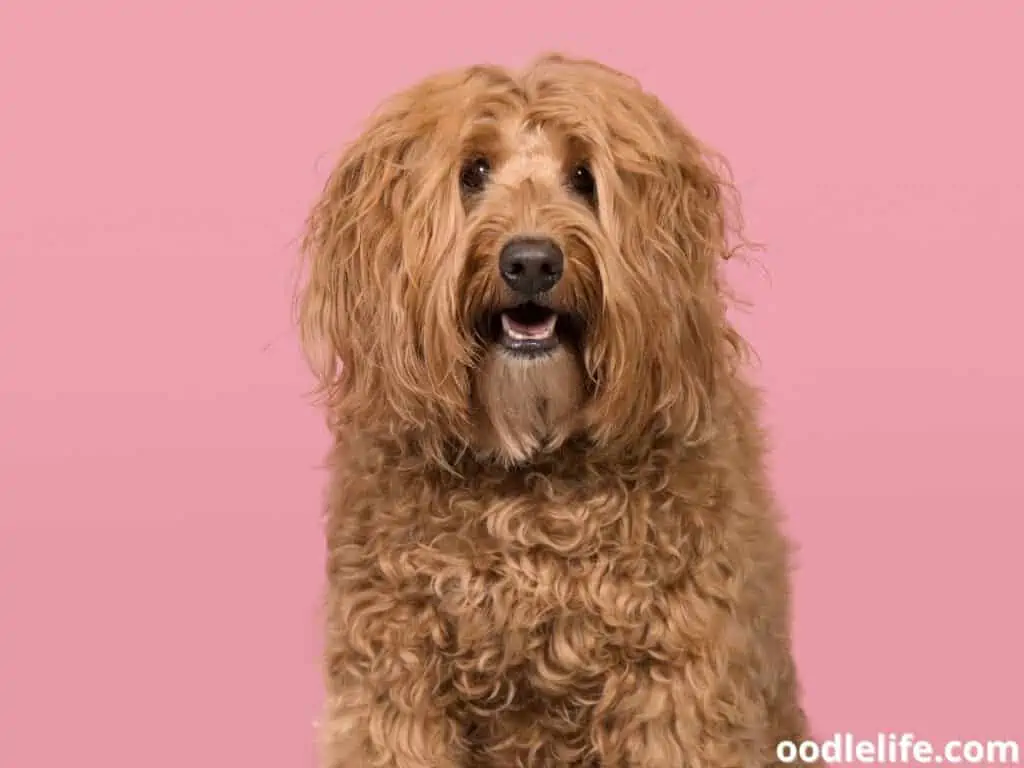
Similarly, the larger standard size both range between 21 and 25 inches tall.
The difference between both breeds in size is generally how reliable the litters are at keeping to these rangers. If you breed two Miniature Australian Labradoodles together then you should have a litter of Miniature Australian Labradoodles. If you breed a Miniature Poodle with a Labrador you may get a mixture of both standard and miniature size dogs depending on how large the Labrador is.
Early generations can be a little harder to predict regarding the Labradoodle.
Coat and Grooming: How Hard Are They to Upkeep?
The coat of your Labradoodle will often depend on the generation they are bred from. Generally speaking, Labradoodles are known for being a non-shedding breed that does great in homes where you want a family dog but is allergic to the coats of long or short-haired dogs.
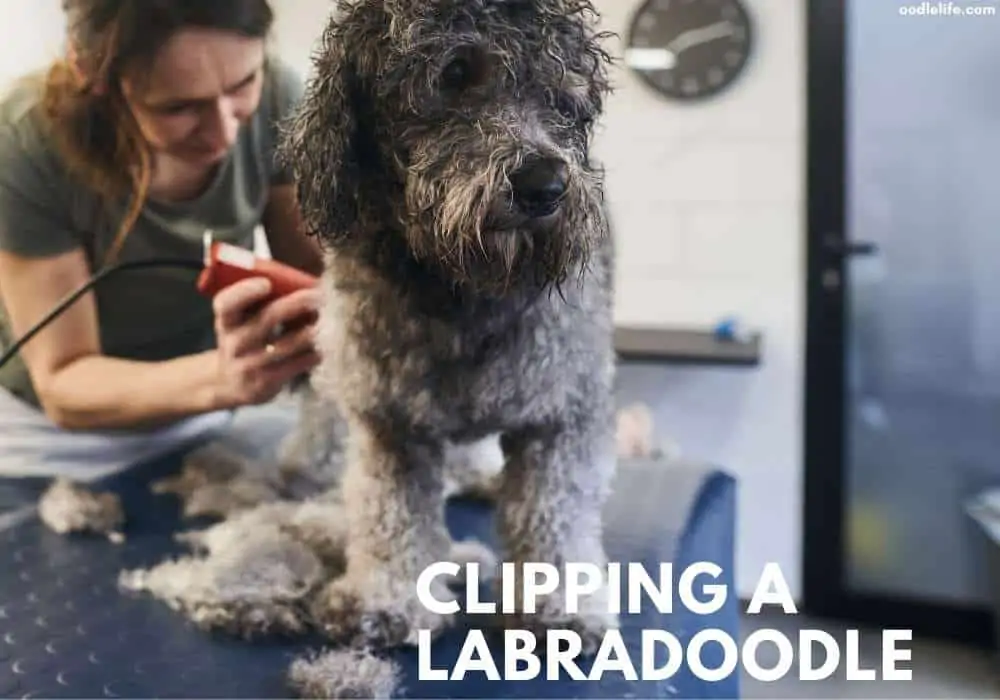
If you’re specifically looking for a dog that doesn’t shed, you’ll want to look for Labradoodles that are further away from their purebred lineage. The more closely related a short coated, shedding breed is genetical to your puppy, the more likely they are to retain this trait. If you have a Labradoodle that is from a long line of Labradoodles with the original breeding deep down in its pedigree, you’re far more likely to have a dog that doesn’t shed.
This is one of the key differences between an Australian Labradoodle and the Standard Labradoodle, with the Australian variety you are guaranteed to be some generations away from the shedding Labrador. You’re far more likely to have a coat that doesn’t shed.
You can also get a wider range in coat texture with the early generations of Labradoodle. Coats of a Labradoodle can be curly, wiry, or wavy though the most common is curly when the Poodle genetics are prioritized to give the best chance for a low to no shedding dog. They require some grooming, especially if they grow a long coat as the curls can get knotted and it’s not always clear to see until they start to develop into little mats.
Many owners choose to keep their Labradoodles clipped to avoid this but the extra coat can be good in winter or colder regions.
Temperament: What Kind of Personality to Expect?
Both types of Labradoodles have great temperaments. They have one of the most intelligent breeds, the Poodle, in their lineage as well as the most popular family-oriented breed, the Labrador. The mix makes for a highly trainable and very friendly offspring.
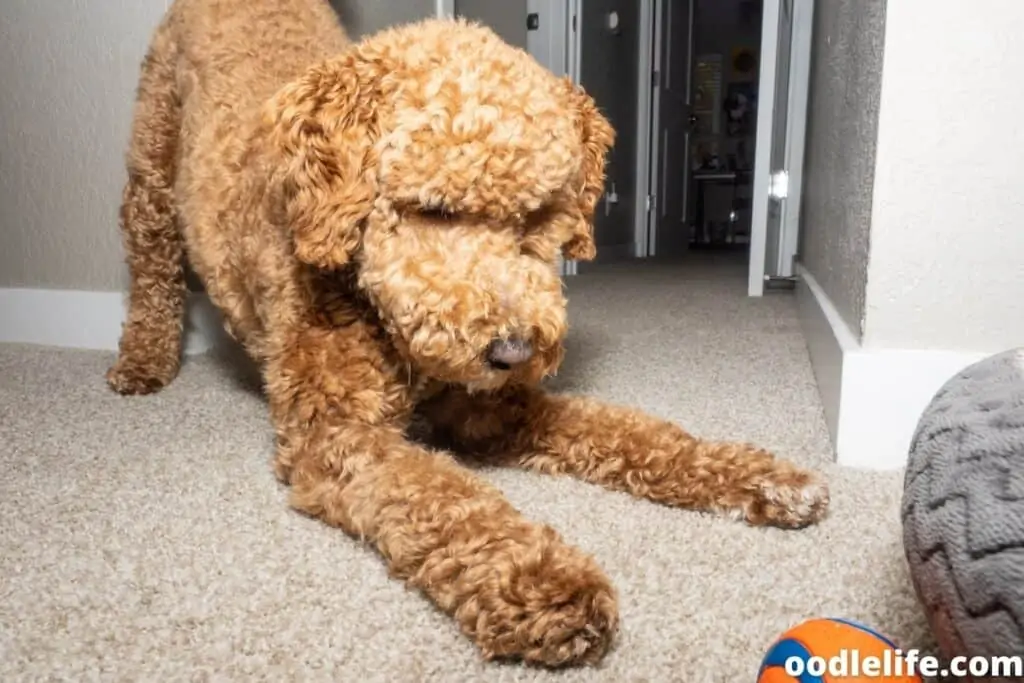
The main difference between the Australian Labradoodle and the Labradoodle again comes down to the genetics of having different breeds in their lineage. The Labradoodle is a mix of two very bright and very energetic working dogs.
While the Australian Labradoodle is still very energetic, they tend to have slightly calmer personalities because the working lines are diluted between other breeds. Similarly, the Labrador and Poodle are very intelligent breeds which can translate to stubbornness in temperament. With a larger pool of generically different dogs, this tends to make for a more easy-going people pleaser so the Australian Labradoodle tends to be a little more rounded and a little more suited to being a family pet.
Exercise Needs: How Energetic and Trainable Are They?
Both Poodles and Labradors are working breeds and are therefore bred to have a lot of energy. Poodles are bred for hunting, their coats made to protect them in marshy terrain and in water so they can retrieve ducks. Labradors were originally bred to retrieve fish for their fisherman owners if they fell out of nets or off the boats.
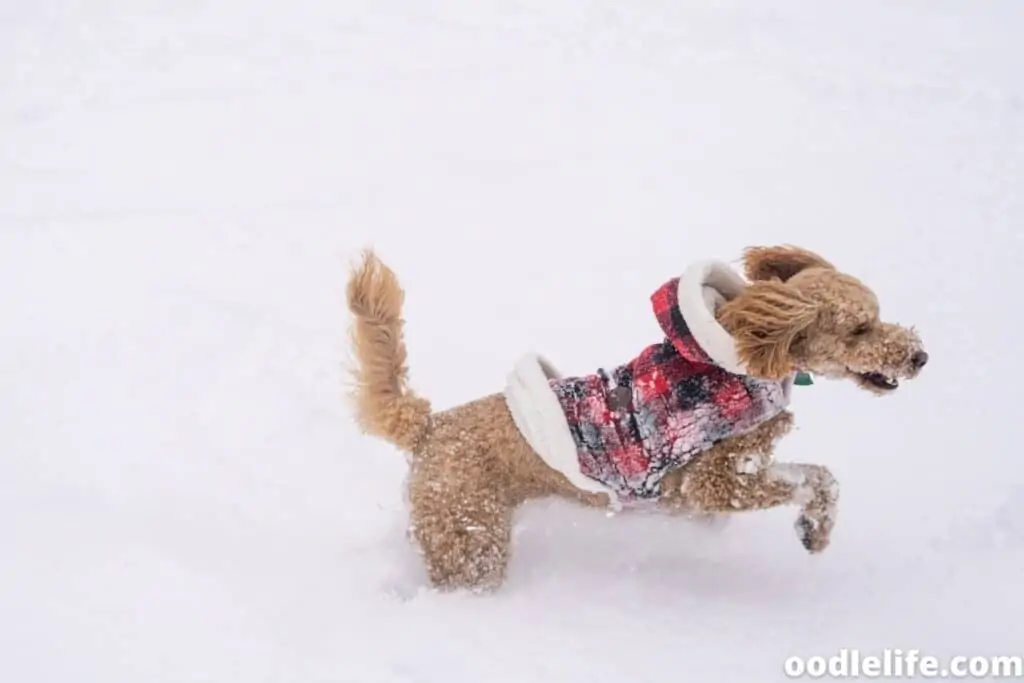
Both are breeds of dog that are highly trainable as they work so closely with their owners so naturally, a mix between the two will also be. They’re also bred to work long hours so a standard short walk would not suffice as ideal a Labradoodle’s brain also needs to be kept stimulated.
The Australian Labradoodle differs slightly in that with more breeds in the gene pool, it dilutes the working drive of the Poodle and the Labrador so in general, you still get a very active dog but they can turn off quite easily and are a little more laid back.
Suitability: Are They The Right Breed For You?
If you’re looking for a family-oriented dog that will generally be quite amenable to different living situations, a Labradoodle may be suitable. They’re a high-drive working breed that needs a lot of exercise and mental stimulation. Even the smaller versions of the breed may be comfortable living in smaller spaces but that doesn’t mean they need any less exercise or mental stimulation.
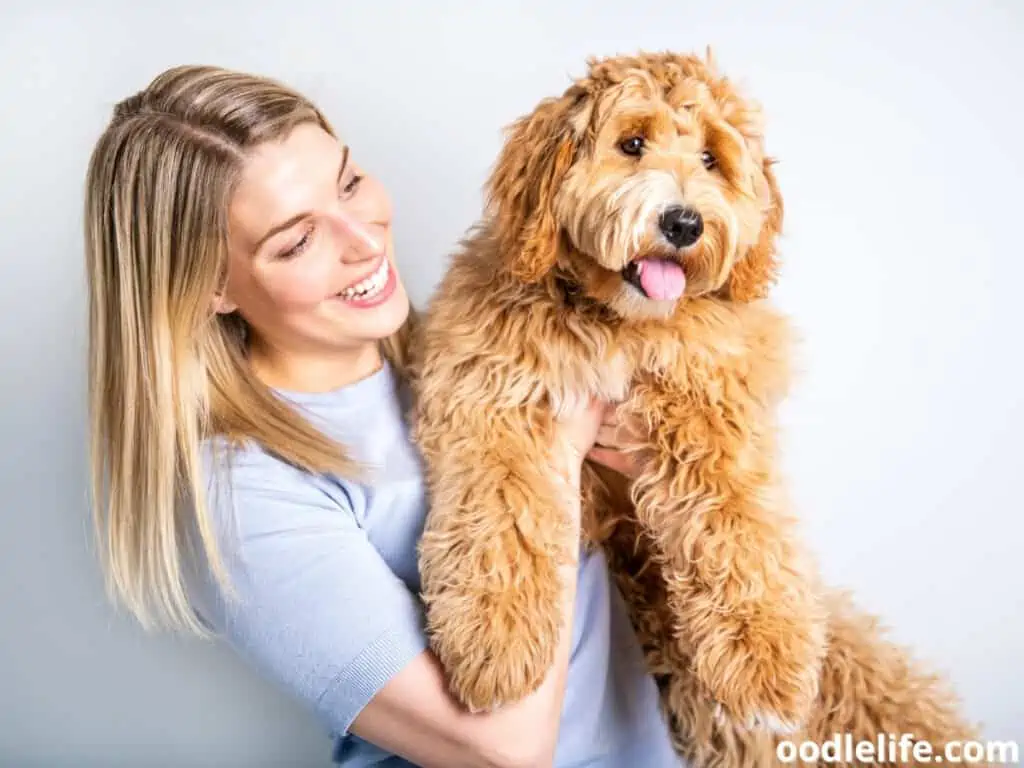
All sizes of the mix are energetic but if you can meet their needs, they make great family dogs or working dogs. Many Labradoodles become assistance animals.
If you’re looking for a more balanced, family pet without so much working drive, an Australian Labradoodle may be more suitable. They come in similar sizes and temperaments are almost identical, they just have an off switch unline some Labradoodles.
Conclusions
It’s no surprise that Labradoodles have become so popular. They make excellent pets, especially if you have the kind of lifestyle where you like to take your dog on new adventures and go exploring. These happy-go-lucky dogs with larger-than-life personalities are a great balance between two working dogs.
If you’re looking to get a puppy from a breeder then you might see different breedings of Labradoodles and Australian Labradoodles. Depending on what you’re looking for in your new puppy you may want the independent streak that is more prevalent in the Labradoodle with such a high amount of Poodle genetics. Or the less stubborn Australian Labradoodle with more diluted genetics of any one breed may be more suitable if you’re looking for a more laid-back companion.